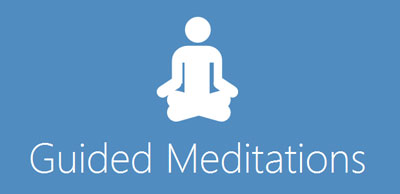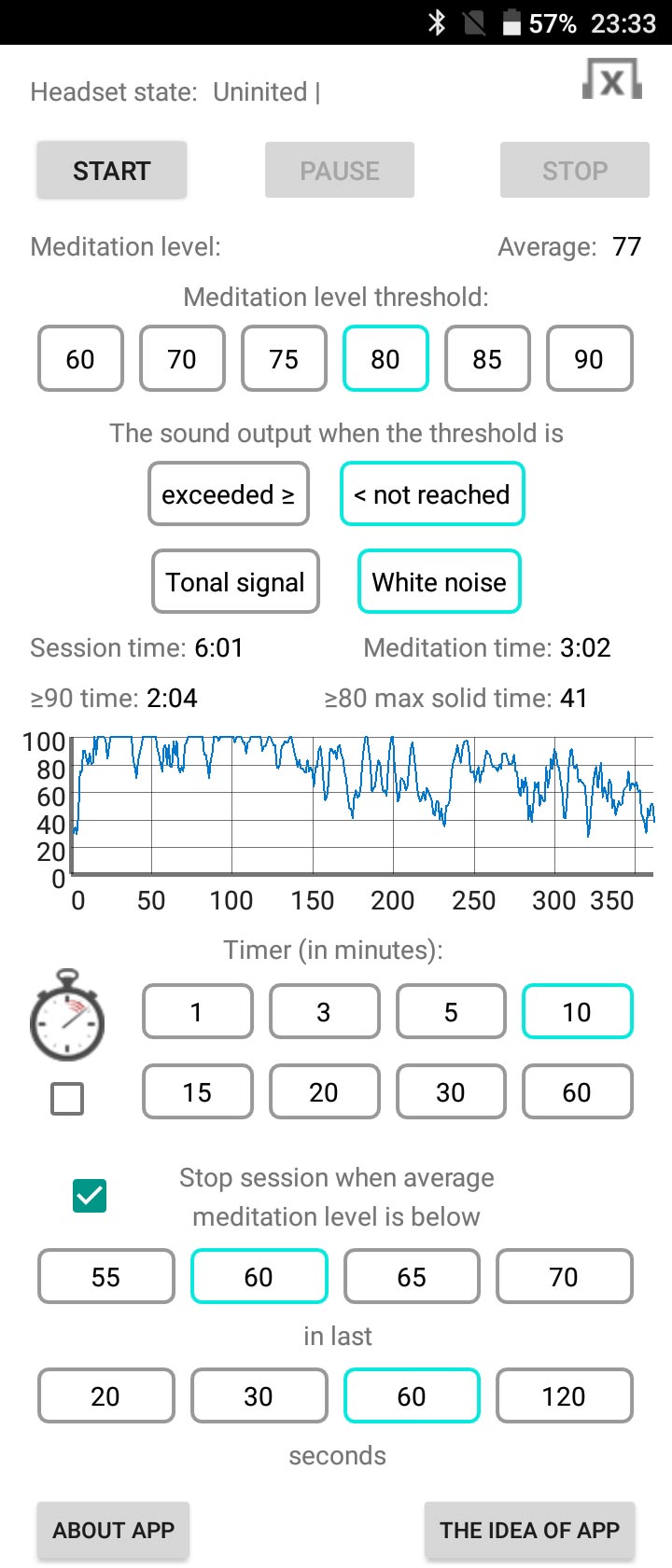
|
You are on the page: Scriptures.ru ➤ Meditation book ➤ Guided meditation
|
Guided meditation
Guided meditation is the process in which one or more participants meditate according to guidance provided by a trained professional or teacher, either in person or through written text, sound recording, video or audiovisual material containing music or oral instruction, or a combination of both.

|
The term "guided meditation" is most often used in clinical practice and scientific research to refer to a collection of integrated methods. The most popular and most commonly used combination includes meditation music, music therapy, guided imagery, relaxation, some form of meditation and mindfulness, and journaling. Hypnosis or hypnotherapy procedures can be included as part of the process. Psychotherapist Michael D. Yapko has shown striking similarities between hypnotic treatments and guided meditation treatments.
Research authors and clinicians often analyze and discuss the effects and effectiveness of this process as a whole, making it often difficult to identify positive or negative results from any particular technique that promotes guided meditation. In addition, the term guided meditation is often used interchangeably with guided imagery and sometimes with creative visualization in popular psychology and self-help literature, and to a lesser extent in scientific publications. Therefore, understanding the nature, scope, and limitations of guided meditation requires that it be viewed in context and in relation to the many techniques that are integral to its practice, allowing for variations in terminology.
Guided meditation as a collection or synthesis of techniques, including meditative music and music perception therapy, guided imagery, relaxation, meditative practice and self-reflective journaling, has been shown to be effective in accelerating therapeutic, rehabilitative, and educational positive change when used as an adjunct to major clinical and learning strategies, including as a means of reducing stress levels, minimizing the frequency, duration and intensity of asthma attacks, controlling and regulating pain, developing coping skills, improving the ability to perform complex tasks in difficult situations, reducing the frequency of insomnia, reducing feelings of anger, reducing the occurrence of negative or irrational thinking, calming anxiety, increasing optimism, improving physical and mental abilities, and increasing overall well-being and self-esteem for the quality of life.
In terms of training the actual state of meditation, guided meditation can only be used for beginners. This is explained in detail below.
In meditation itself, the meditator is a subject, not an object, and he completely independently controls the process of meditation – the initiative of self-control and composure comes from the meditator himself, and any verbal perception by the mind of semantic information in shamatha / samadhi meditation is excluded, since it significantly impairs the quality of meditation , causing, for example, the activity of beta brain waves and reducing the activity of alpha waves. Meditation (shamatha or samadhi) is not reasoning or thinking about meanings.
At the same time, in guided meditation, the user is in a relaxed and passive state, regularly perceiving the verbal instructions of the guidance, the perception of which will knock him out of the state of meditation and the dominance of alpha brain waves (if any). Moreover, the actual absence of a general state of composure and self-discipline in guided meditation as a result of immersion in a state of mental relaxation and loss of self-control ("falling into nowhere") very often leads away from the state that is called shamatha meditation in Buddhism. This is easily confirmed by neuroheadsets with "meditation" parameter (for example, NeuroSky).
Guided meditation has no means of objectively controlling whether the user has a state of meditation. At the end of a guided meditation session, a voice or text in the application can tell the user "Good meditation!" But this is just an unconditional reassurement for the user, a psychological technique that, by definition, has no objective confirmation.
At the same time, the use of neuroheadsets with the "meditation" parameter, which is a household single-channel electroencephalograph for $120 with an additional analysis of brain rhythms to determine the levels of meditation and attention, makes it possible to determine the user's meditation level in percent every second with a technical delay of 1-2 seconds. Below is a screenshot of the "EEG-meditation" application for Android (similar applications are available in the iOS and Windows versions) for the NeuroSky MindWave Mobile neuroheadset.
 Screenshot of the free application "EEG Meditation" for Android for the NeuroSky MindWave Mobile neuroheadset. |
In light of the above, it can be noted that guided meditation can be helpful as an additional stress reliever, but it is not actually meditation.
The author of the article: V. Vernyhora, 27.06.2019, translated 14/12/2020. When reprint, reference to a source scriptures.ru/yoga/guided_meditation_en.htm is required.
|
"Meditation" group on Facebook |
Рекомендуемые тексты:
Что такое медитация и как медитировать.
"Как медитация меняет ваш мозг и вашу жизнь". Дэниел Гоулмен и Ричард Дэвидсон.
Медитация с использованием обратной нейросвязи с помощью ЭЭГ NeuroSky MindWave Mobile – ускоренное самостоятельное изучение медитации. Общие вопросы ЭЭГ-медитации.
Вопросы и ответы по нейрогарнитуре NeuroSky MindWave Mobile в контексте практики медитации.
Прем Нирмал "Наука медитации" – что такое медитация и чем она не является.
Описание духовной медитативной практики в одной из ветвей (виджняна-вада) буддизма махаяны. Предельно практичное и полезное описание медитативной садханы.
"Йога-сутры" Патанджали – наиболее авторитетный текст по йоге.
Откуда есть пошла йога нынешняя, или краткая история хатха-йоги.
Андрей Сафронов "Хатха йога и Патанджали".
Как медитация воздействует на биохимию мозга.
|
|